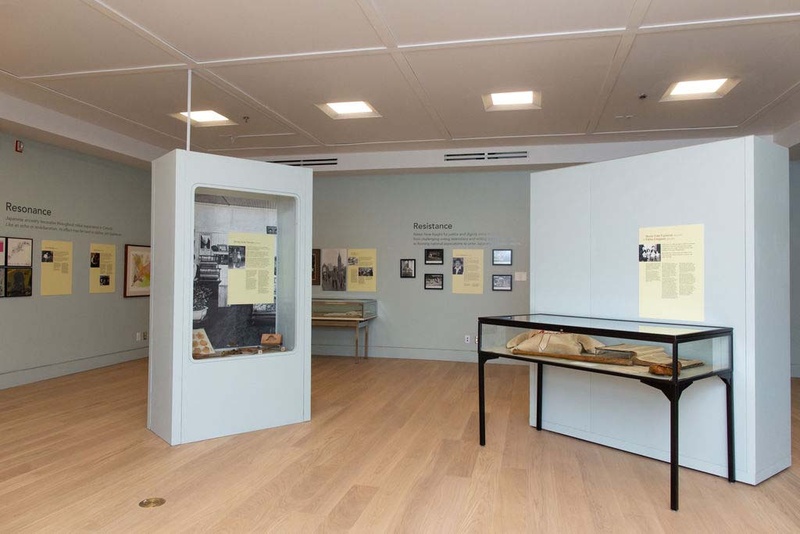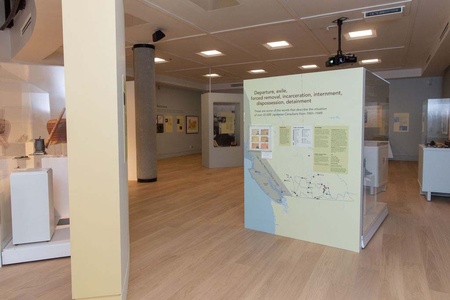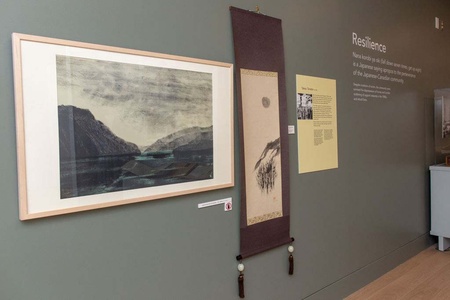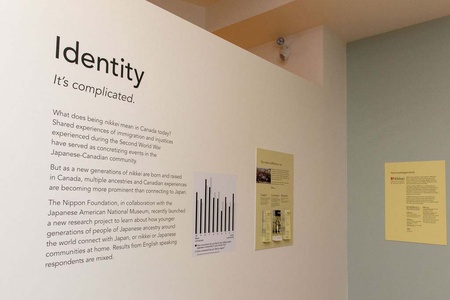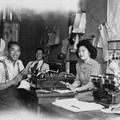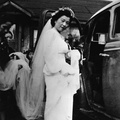What is nikkei? We at the Nikkei National Museum & Cultural Centre in Burnaby, BC, Canada have been asked this question many times since we opened in 2000. Our 1000-square-foot gallery space has hosted a number of informative and fascinating exhibits since then, from pieces of Japanese Canadian history such as our Levelling the Playing Field exhibit on the Vancouver Asahi baseball team (2005-2006); to contemporary art exhibits of Japanese Canadian artists like Yo-in: Reverberations (2012); to Japanese cultural exhibits like Kimono Culture (2017). But we’ve lacked the display space to offer a permanent exhibit on Japanese Canadian history, from immigration to internment to redress and beyond. Our hallway photograph exhibit, Taiken, has shared this story with our visitors since 2012, but many treasured and historically significant items in our collection have remained out of public sight for lack of display space.
In 2017, we finally had our chance to realize our dream of a permanent exhibit display space when we received a private donation for museum renovation and expansion, and additional support from the Government of Canada in 2018. In addition to all the preparations, planning, and labour of construction, we had a number of blue sky sessions, museum team workshops, and community consultations to envision this new, permanent exhibit.
We knew that we wanted to tell the Japanese Canadian nikkei story in a way that was dynamic and adaptable: broad enough to touch on many diverse experiences, but concise enough to fit into a still fairly limited display space. We wanted to show off the many treasures in our collections, and we also wanted our community to keep coming back to see the exhibit. We designed the exhibit to be regularly refreshed with new stories and items on display: while the overall narrative of the exhibit, from intro to exit, will stay the same, we have no shortage of stories and items that can illustrate various themes and aspects of being nikkei that the exhibit touches on. What emerged from this process is Nikkei日系, an exhibit that undertakes to define the complexities of the term nikkei: its history, and our collective community identity, for our visitors.
Even though we wanted to tell the Japanese Canadian story in a nonlinear way to make room for unexpected and diverse stories within the overall narrative, we knew that we had to start the exhibit by talking about migration. “Intersections of Arrival” includes stories of immigrants from Japan to Canada both before and after the Second World War: early immigrants who saw opportunities in the abundant natural resources of Canada’s westernmost province of British Columbia but had to overcome increasingly racist Canadian immigration laws; and more recent immigrants who have been able to arrive in Canada more easily since the country finally abandoned racial quotas for immigration in the 1960s, and who each carry their own unique reasons for coming to Canada.
“Crosshairs of Racism” speaks more about the systemic anti-Asian racism that early Japanese Canadian immigrants and the Canadian-born nisei generation faced in the years prior to the Second World War. While the wartime detainment of thousands of innocent people, most of whom were Canadian citizens, because of their Japanese ancestry is vitally important history for all Canadians to learn and remember, we want our visitors to understand that internment was not a one-off incident of injustice, but rather the culmination of decades of racist policies carried out by the Canadian government and society. What’s more, our community has always found ways to endure and thrive in spite of this racism: for example, the current iteration of the Nikkei日系 exhibit features accomplishments of the Uchida family, including Kinu Uchida, an issei immigrant woman who responded to racist Anti-Asian Riots in 1907 Vancouver by demanding the Canadian government repay their family for damage caused to their business by the rioters.
We titled our section on the war years “Forced Exile” as just one of many terms used to describe how Japanese Canadians were forced to leave their homes on the west coast of British Columbia in 1942, and the series of injustices that followed. A stove once used to keep an internment camp shack warm, along with other items, illustrate the material reality of the sentence handed down to Japanese Canadians from the Canadian government by reason of their “racial origin”. Also on display are a number of registration cards, which Japanese Canadians were required to carry with them at all times; a reproduction of The New Canadian community newspaper’s final issue to be published from Vancouver before their office’s forced relocation to the interior along with the rest of the community; and, in the current iteration of the exhibit, a number of items telling stories of Buddhist and Christian community leaders during the internment. There are countless stories from this time period well worth telling, and future versions of the exhibit will feature more along with other relevant items in our collection.
We tell further stories of our community under the themes of Resilience, Resistance, and Resonance. “Resilience” speaks to the successes of Japanese Canadians in spite of the racism they faced. “Resistance” focusses on the long history of Japanese Canadians’ commitment to fighting for social justice. And “Resonance” is a space to celebrate the uniqueness of Japanese Canadian culture that continues to evolve today, distinct from Japanese culture. These concepts beautifully encapsulate motivations behind the cultural revitalization of the Japanese Canadian community in the 1970s as well as the redress movement of the 1980s; but also include space for prewar accomplishments like those of the issei couple Saburo and Sada Shinobu: Saburo was secretary of the Canadian Japanese Association and advisor to the Japanese branch of the Canadian Legion. In these roles, he was instrumental in the fight to win the vote for Japanese Canadian First World War veterans, who in 1931 became the first Asian Canadians to vote in Canada since racist legislation banned citizens of Asian descent from voting in British Columbia in 1885. His wife Sada Shinobu founded and ran her own sewing school, Girls’ College of Domestic Arts, to equip nisei women with a skill that allowed them gainful employment in a world that left very few doors open to those who were both women and of Asian ancestry.
The exhibit closes with “Identity”. What does it mean to be nikkei today? It’s complicated. Nonetheless, we want our takeaway message to apply to all visitors, whether they identify as nikkei or not. We encourage our visitors to be inspired by the nikkei role models in our exhibit who have all contributed to their community and to broader society in their own unique ways. Take a bookmark home with you as inspiration to find your own way to contribute to your community.
Nikkei 日系, curated by Nikkei National Museum director|curator Sherri Kajiwara with support of the entire museum team and extensive community consultation, is on display at the Nikkei National Museum & Cultural Centre’s new Karasawa gallery until July 2020. From August – December 2020 we will share the Japanese Canadian story via an exhibit co-curated with the Royal BC Museum, Broken Promises. Broken Promises interprets the research of the Landscapes of Injustice 7-year academic project on Japanese Canadian dispossession during the 1940s, and will travel from the Nikkei National Museum all across Canada. In 2021, Nikkei日系 will return, sharing the Karasawa gallery space with rotating exhibits on Japanese Canadian history, art, and culture.
* * * * *
Nikkei 日系 is on view at the Nikkei National Museum & Cultural Centre from July 2019 through July 2020.
British Columbia, Canada
For more information about this exhibition >>
© 2020 Carolyn Nakagawa


